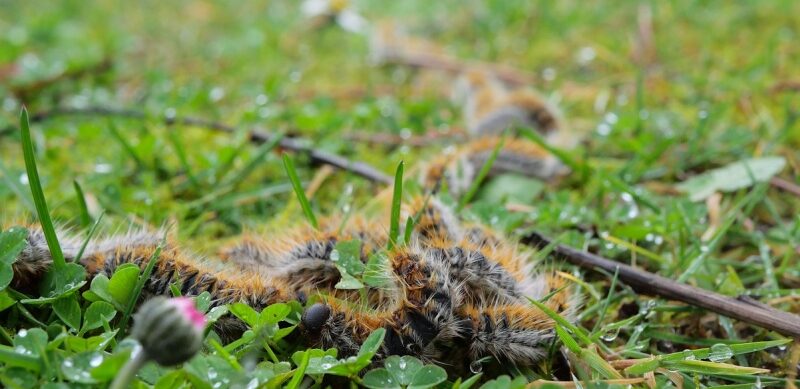Can Caterpillars Damage Your Lawn?

Caterpillars are the larval stage of moths and butterflies, and while they are often admired for their eventual transformation into beautiful insects, they can also cause significant damage to your lawn. Caterpillar infestations can lead to unsightly patches, weakened grass, and even complete destruction of your turf if left unchecked. In this blog, we'll explore how caterpillars can damage your lawn, signs of an infestation, and effective control methods to protect your grass.
How Caterpillars Damage Your Lawn
Caterpillars feed on plant material, and some species are particularly fond of grass. The most common lawn-damaging caterpillars include armyworms, cutworms, and sod webworms. Here's how each of these pests can harm your lawn:
- Armyworms: These caterpillars travel in large groups, or "armies," and can quickly defoliate large areas of grass. They feed on the leaves, stems, and even the crowns of grass plants, causing significant damage in a short period of time.
- Cutworms: Cutworms are nocturnal feeders that sever grass blades near the soil surface, creating irregular patches of dead grass. They often hide in the soil during the day and come out to feed at night.
- Sod Webworms: These caterpillars create silk-lined tunnels in the thatch layer of your lawn and feed on grass blades at night. Their feeding creates small, irregular patches of brown grass that can merge into larger areas of damage if the infestation is severe.
Effective Caterpillar Control Methods
If you suspect a caterpillar infestation in your lawn, it's important to take prompt action to prevent further damage. Here are some effective control methods:
- Maintenance Practices:
- Mow Regularly: Keep your lawn mowed at the recommended height for your grass type. Regular mowing can help reduce the caterpillar population by removing their food source.
- Watering: Proper watering practices can promote healthy grass growth and make your lawn less susceptible to caterpillar damage. Water deeply and infrequently to encourage deep root growth.
- Biological Controls:
- Beneficial Insects: Introduce natural predators, such as parasitic wasps and nematodes, to help control caterpillar populations. These beneficial insects can provide long-term control by preying on caterpillars and their eggs.
- Bacillus thuringiensis (Bt): Bt is a naturally occurring bacterium that is toxic to caterpillars but harmless to humans, pets, and beneficial insects. Apply Bt to your lawn according to the manufacturer's instructions to target caterpillar larvae.
- Chemical Controls:
- Insecticides: If cultural and biological controls are not sufficient, consider using insecticides specifically labeled for caterpillar control. Follow the manufacturer's instructions carefully, and apply the insecticide in the evening when caterpillars are most active.
- Granular Insecticides: Granular insecticides can be spread evenly across your lawn and watered in to reach the caterpillars in the soil and thatch layer.
- Monitoring and Maintenance:
- Regular Inspections: Monitor your lawn regularly for signs of caterpillar activity and take action at the first sign of an infestation. Early detection and treatment can prevent extensive damage.
- Lawn Maintenance: Maintain a healthy lawn by following proper lawn care practices, including fertilization, aeration, and overseeding. A healthy lawn is more resilient to pest damage and can recover more quickly from infestations.
Caterpillars can cause significant damage to your lawn if left unchecked, but with early detection and effective control methods, you can protect your grass and maintain a healthy, vibrant lawn. At The Experienced Gardener, we offer expert lawn care services, including pest control, to help you keep your lawn beautiful and pest-free. Contact us today for professional advice and treatments tailored to your lawn's needs.


